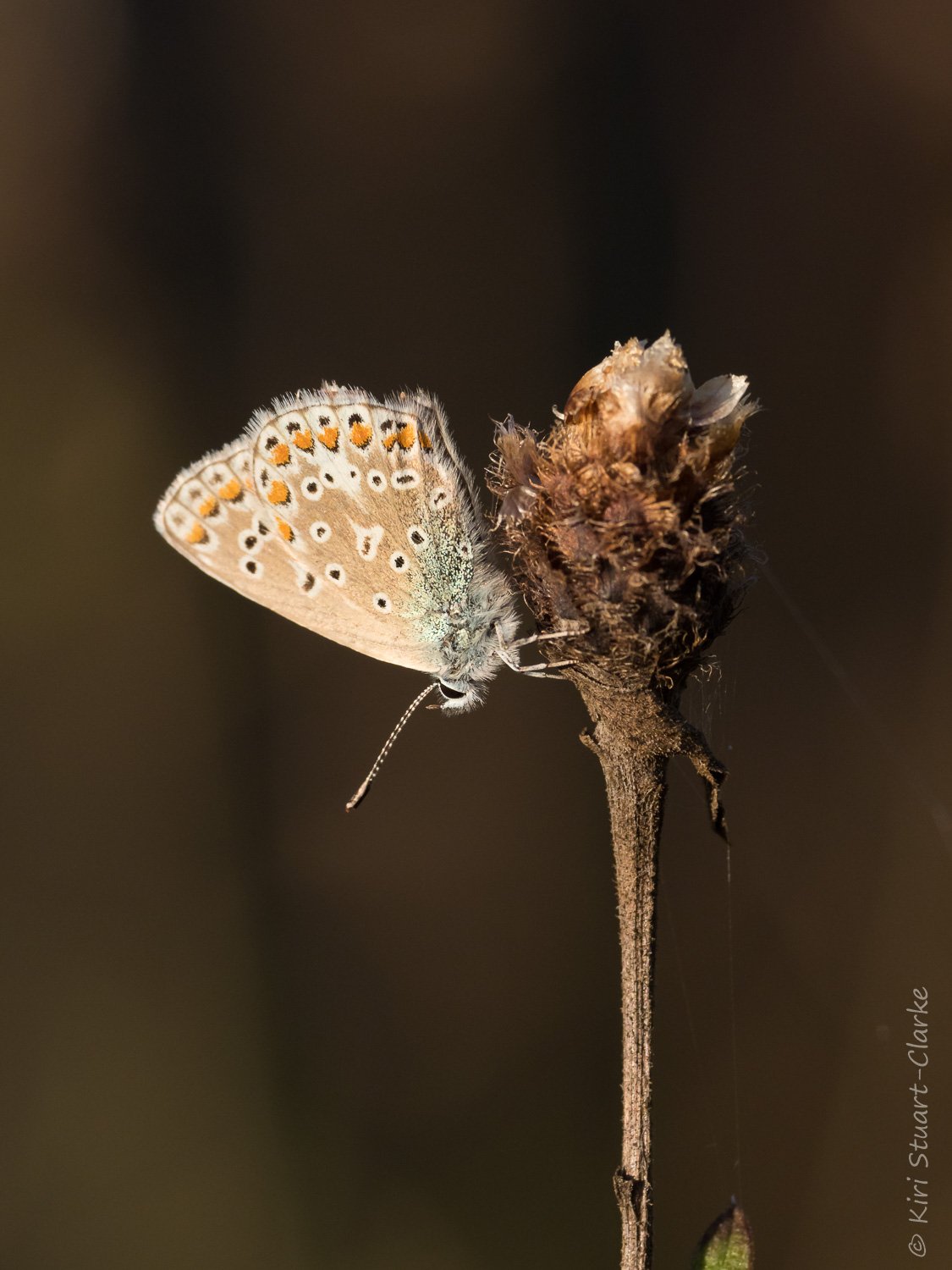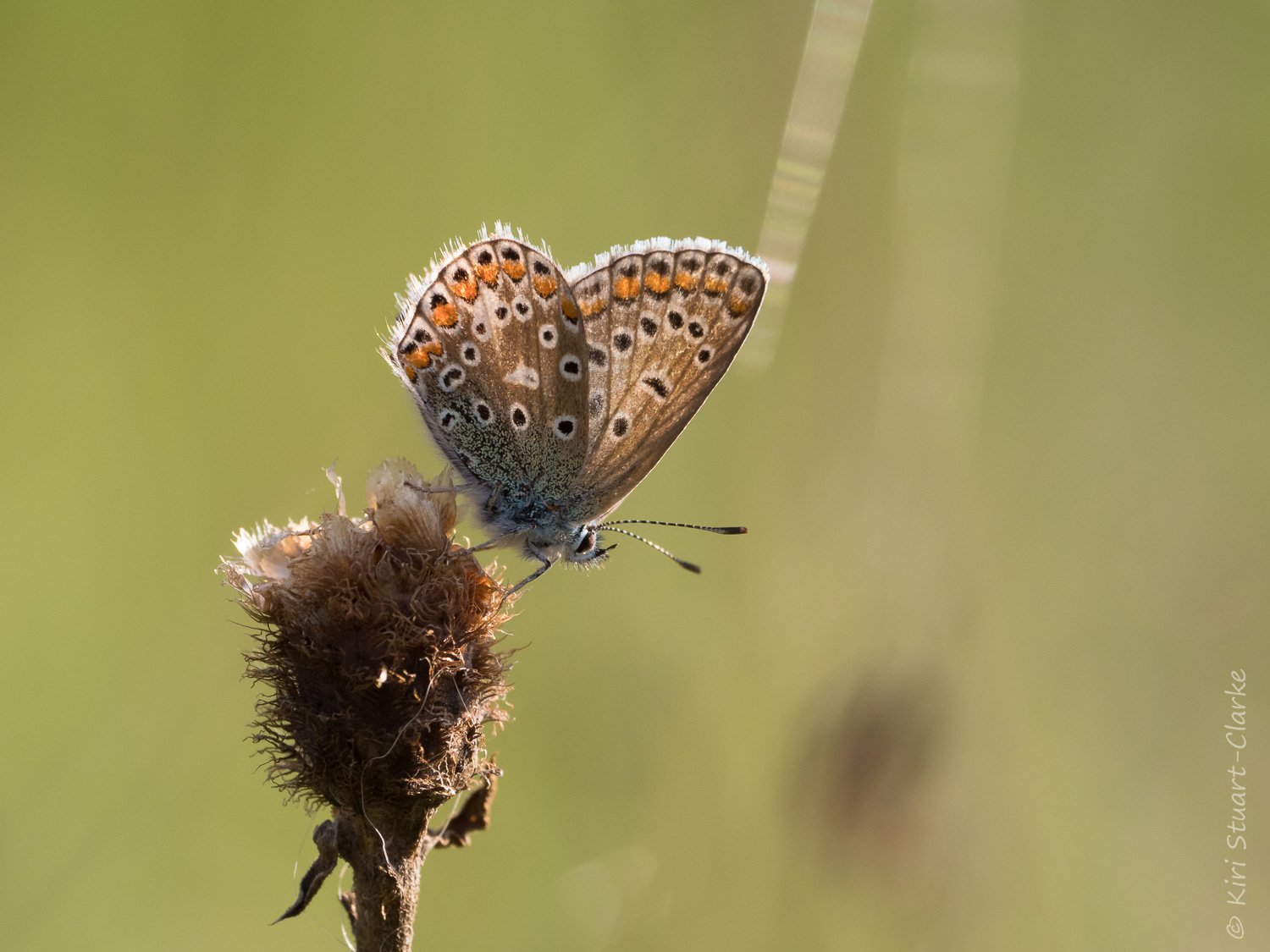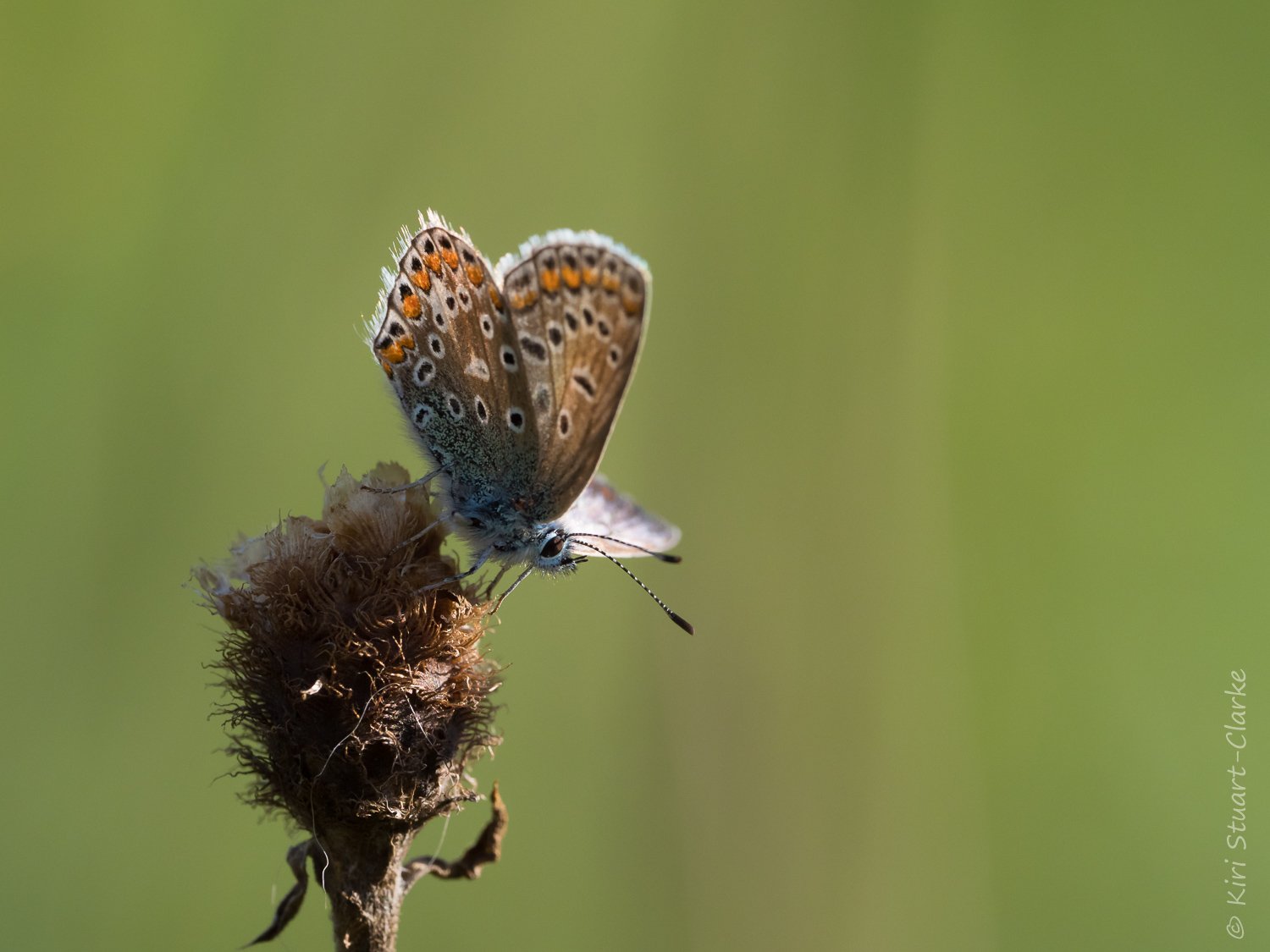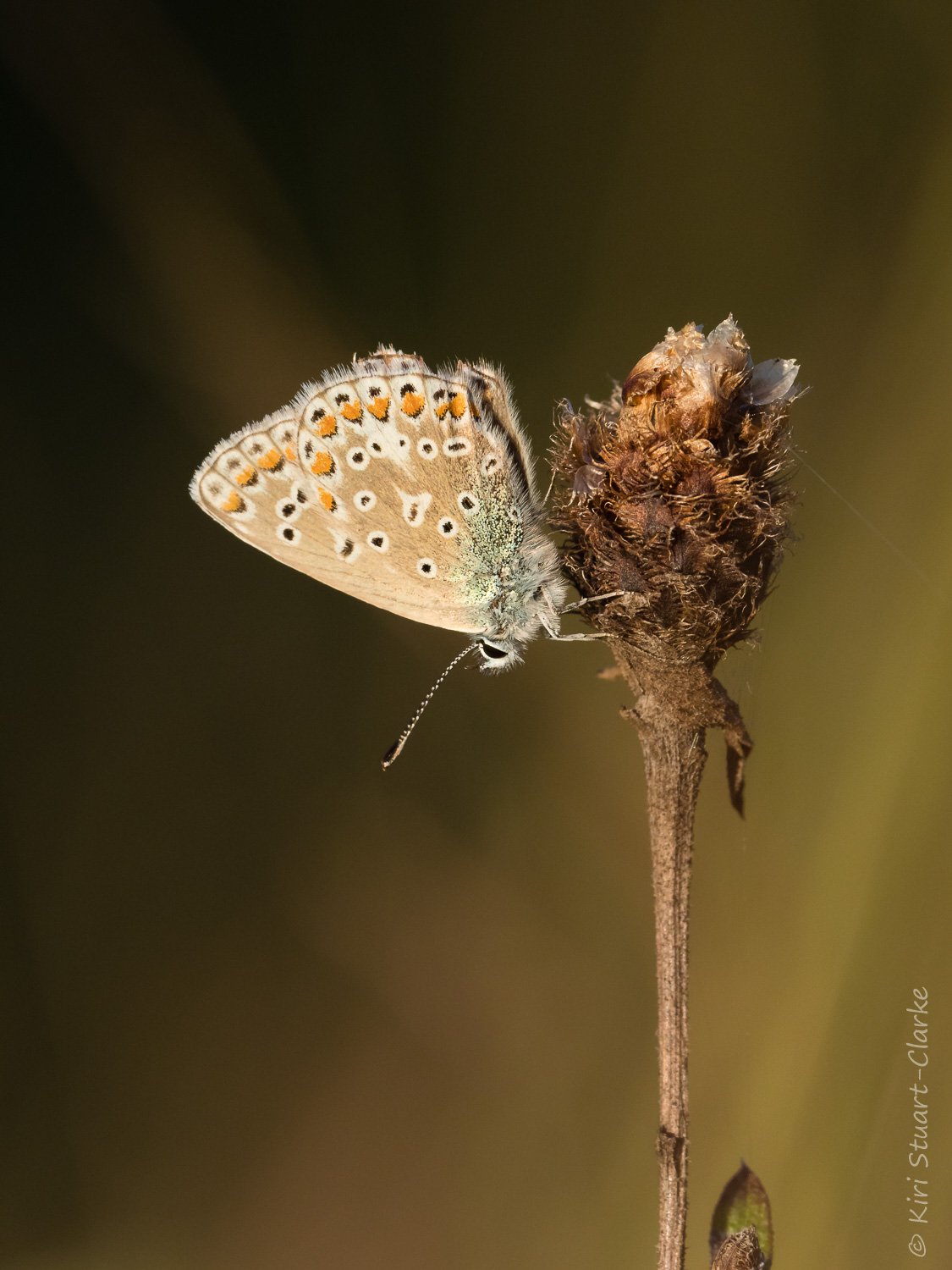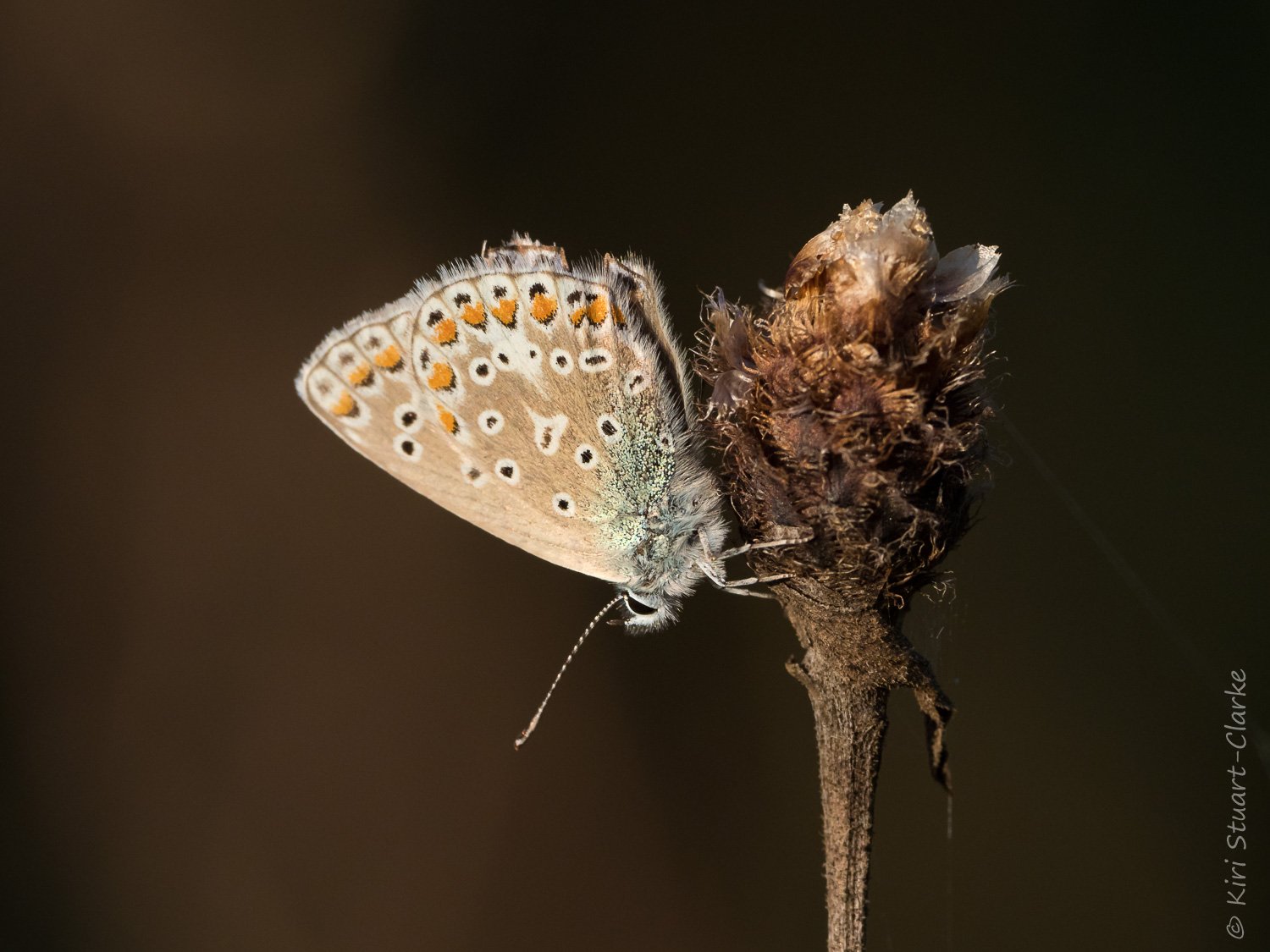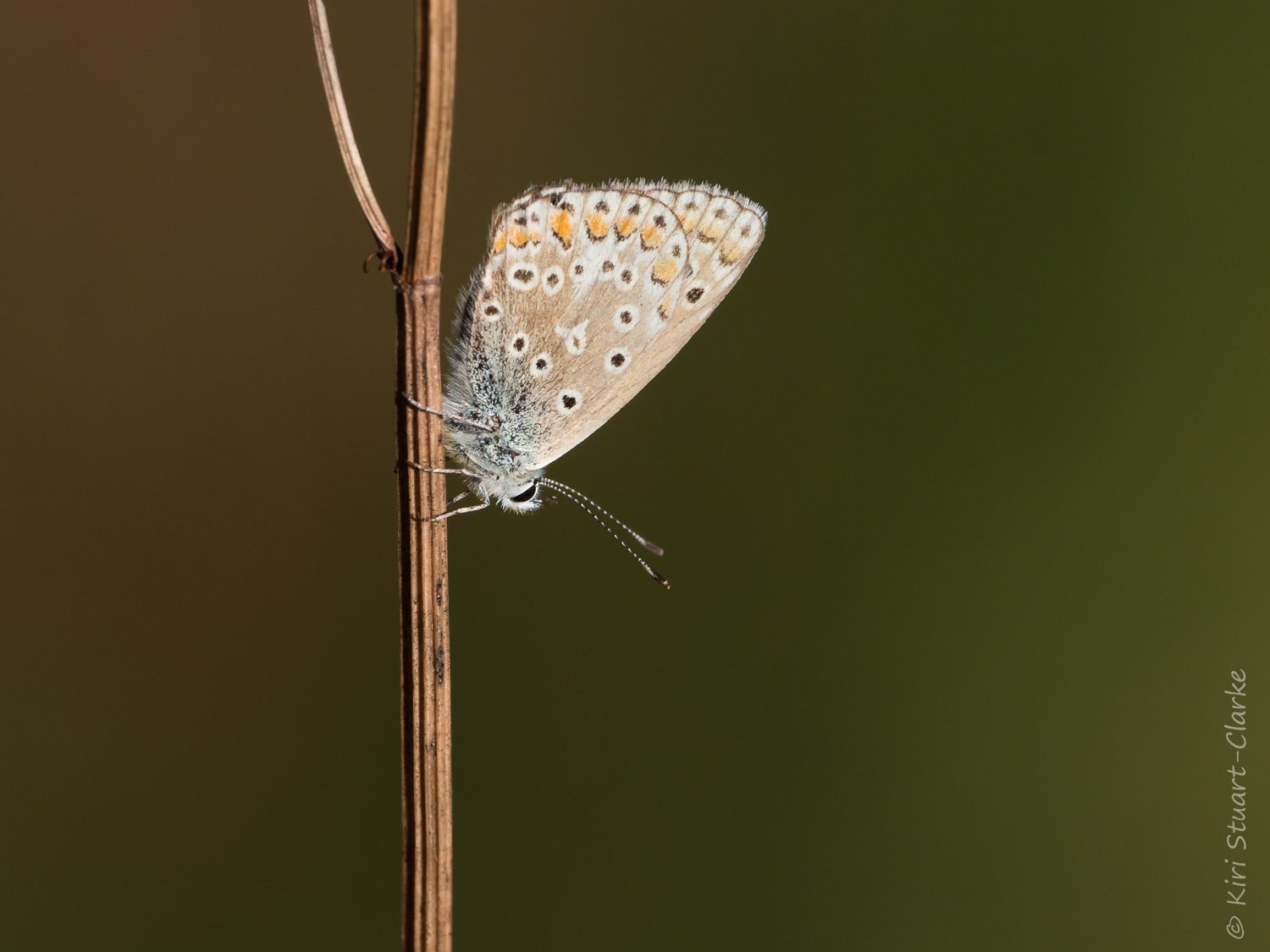What was probably my last butterfly shoot of 2022 happened one evening in beautiful golden light when I spotted not one but four female Common Blue butterflies settling down to roost in a very small strip of our wildflower meadow that we’d decided for the first time was mature enough to leave uncut over winter.
It was a timely reminder to me that the less we humans do to intervene, “control” and “manage” things and the more we resist the urge to “tidy up”, the better chance wildlife has to thrive in our man-made garden, park and urban environments.
Butterflies in particular are vulnerable to disturbance at pretty much any time of year as their eggs, caterpillars or pupae lifestages may all be needing to shelter amongst or feed on plants even when adults are not on the wing. If at all possible, its a good idea to try to leave a section of meadow untouched for a full twelve month cycle at any one time to allow larval stages to overwinter successfully undisturbed.
Nature just isn’t a tidy phenomenon, its chaotic and unpredictable. But the innate human desire for what is ultimately a false sense of control is a perennial urge played out in our gardens and very hard to resist, especially when accompanied by societal pressures of convention and fashion. Over the years this along with the globalisation of plant production resulted in the creatiion of a modern aesthetic that is surprisingly wildlife unfriendly from an ecological perspective, with large showy double blooms with little nectar to offer pollinators, exotic non-native flowers that can’t be used as host plants and monoculture green-baize lawns doused in weedkiller to prevent even a daisy or dandelion, and these days, a great deal of hard landscaping too.
Thankfully the emergence of the wildlife-friendly gardening trend and greater awareness of envirnomental issues is gradually encouraging the development (and revival) of more naturalistic planting schemes and is evolving that traditional aesthetic towards more sympathetic wildlife-friendly designs such as prairie style and cottage-garden planting, low mow flowering lawns and the inclusion of mini wildflower meadows and even wildlife ponds.
After all, who wants a dull old bowling green lawn when the reward is enjoying beautiful wildlife sights like these little roosting butterflies instead!
